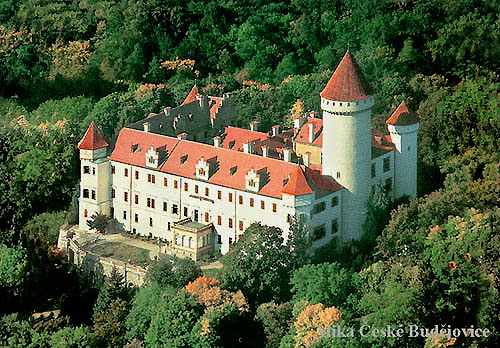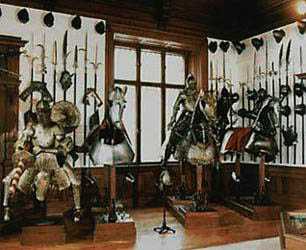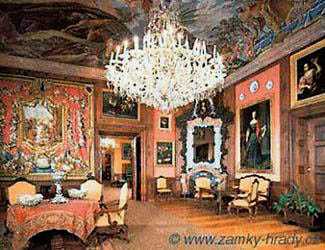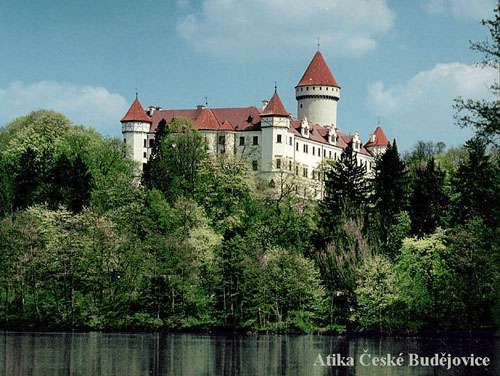Konopiště
 Státní zámek Konopiště, 256 01 Benešov u Prahy
Státní zámek Konopiště, 256 01 Benešov u Prahy
Tel. +420 317 721 366, e-mail: konopiste@pusc.cz

A predecessor to the present manor was a castle of the lords of Benešov in the 14th century,
refashioned under the Šternberks in the late Gothic style, and, at the start of the 17th
century, in the late Renaissance style. In the first half of the 18th century the extensive
Baroque modifications of the manor structure took place under the Vrtba House authority,
namely on the manor's southern section. In 1887 a successor to the Austro-Hungarian throne,
František Ferdinand d'Este, became owner of Konopiště, and in 1889 - 1894 he had extensively
restoration performed on the manor, this work having been connected with transformations
into Gothic forms. The building plans were drafted by the Czech architect, J. Mocker, who
participated with J. Schmotanz in designing adjustments to the interior, afterwards enriched
with quality furnishings by the archduke Ferdinand.


Konopiště keeps extraordinarily rich collections of artistic as well as arts and crafts
articles covering the Gothic, Renaissance, Baroque, and also modern periods, all of them
being of the widest variety. A dimension of these collections puts Konopiště among the most
interesting manors of Central Europe. The archduke had the famous d'Este Armory moved to
Konopiště from his modern inheritance; this armory belongs among the most interesting in
Europe. The collection of the church antiquities, relating to the cult of St. George, the
patron of knights, is also unique. The representative halls on the first floor belong, as do
the interiors, among the best. The Reception Hall and Pillared Hall, for example, both
contain extraordinarily valuable Italian cabinets from the 17th century, the Big Dining Room
with a ceiling painting by F. J. Lux from the middle of the 18th century, and the manor
chapel with beautifully decorated vaults.
Of the residential rooms it is possible to point out, for instance, the Vrtba and Tirpitz
Halls, Rose Room and Vilém Bedroom. The manor passages are decorated with sundry hunting
trophies.


 Státní zámek Konopiště, 256 01 Benešov u Prahy
Státní zámek Konopiště, 256 01 Benešov u Prahy
 Státní zámek Konopiště, 256 01 Benešov u Prahy
Státní zámek Konopiště, 256 01 Benešov u Prahy



